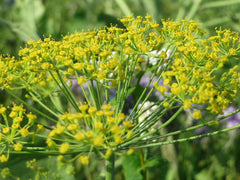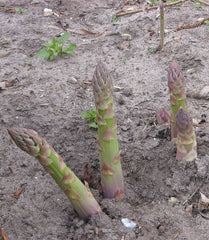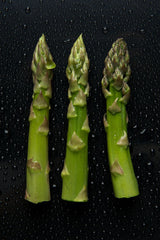Cynara Scolymus, Artichoke - Green Globe
The standard green headed variety. Compact plant habit, 160cm tall, with green heads 8-10cm diameter.
The globe artichoke is often cultivated in the garden and sometimes commercially for its edible flower buds. The flowering plant is a magnet for bees.
Prefers a light warm soil and an open position in full su. Requires plenty of moisture in the growing season and a good rich soil. Succeed in areas with an average rainfall ranging from 400 - 1800mm. Prefers a sheltered position but plants are reasonably wind resistant. Plants are tolerant of saline conditions. Plants succeed in cool climates though they may need protection in cold winters, they are unlikely to thrive in the north of Britain. Wet winters are far more likely to cause problems than cold ones.
Edible uses
Pick unopened flower heads (buds) when they at their largest, just before the bracts (large scales) start to open - but the heads can be picked even when in flower. Small (immature) flower buds can also be harvested. Plants yield about 5 to 6 main heads per year from their second year onwards. The flavour is mild and pleasant. Gobe artichokes are considered to be a gourmet food but they are very fiddly to eat. Flower heads are usually boiled or steamed whole before being eaten. Only the base of each bract is eaten, plus the 'heart' or base that the petals grow from. The sweet, succulent heart of the flower head is the main part of the crop. Globe Artichokes are often served in combination with a source (e.g. hollandaise or mayonnaise) to dip the bracts into. Small, or baby artichokes, that are produced on lateral stems can be pickled or used in soups and stews. The cooked leaves have a bitter flavour.
The dried flowers are a rennet substitute, used for curdling milk.
Flowering stems can be harvested through the growing season. The flowering stems have a sweet nutty flavour. They should be peeled and eaten raw or cooked.
Young leaf stems - a celery substitute. They are normally blanched to remove the bitterness and then boiled or eaten raw.








